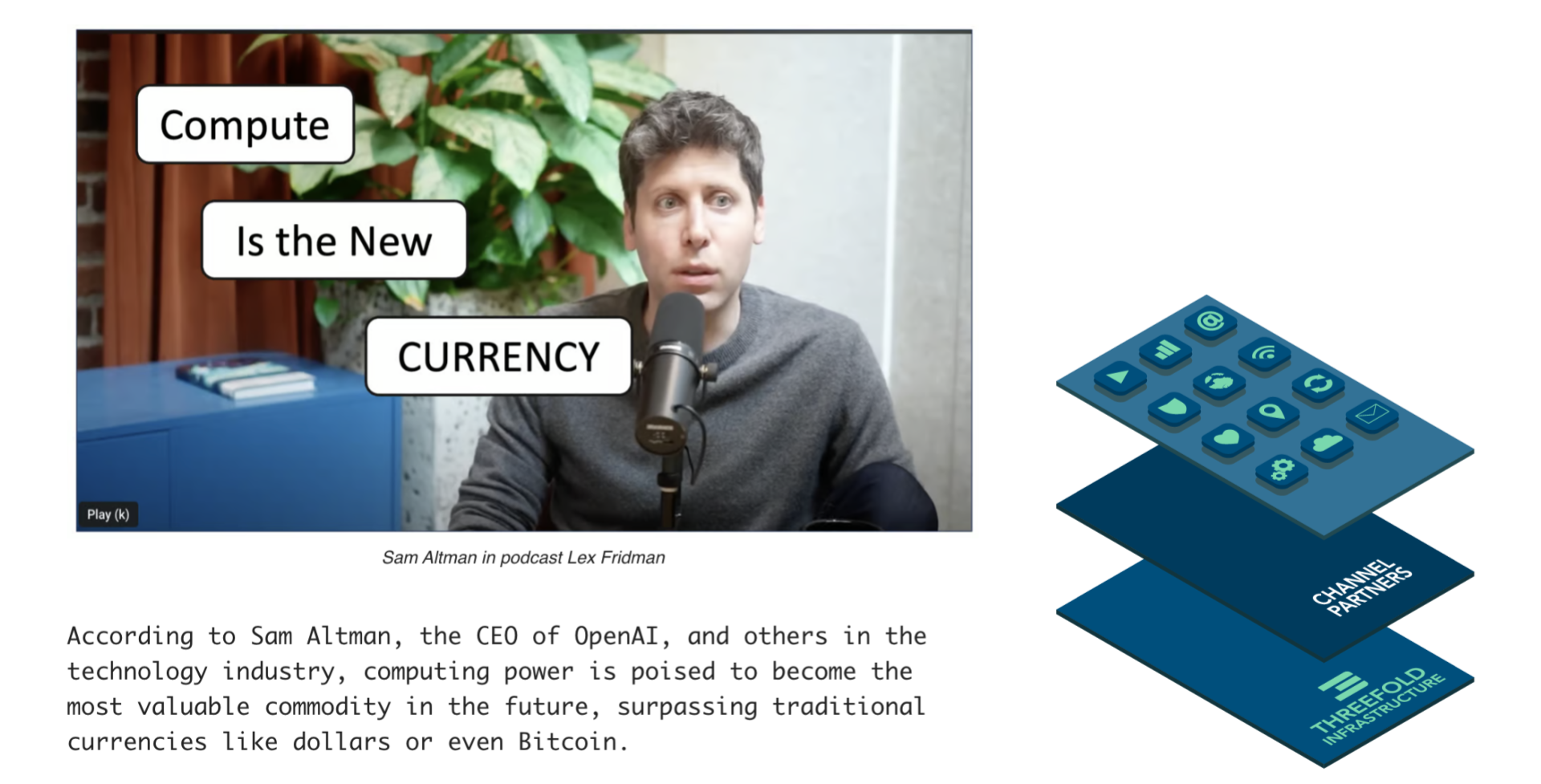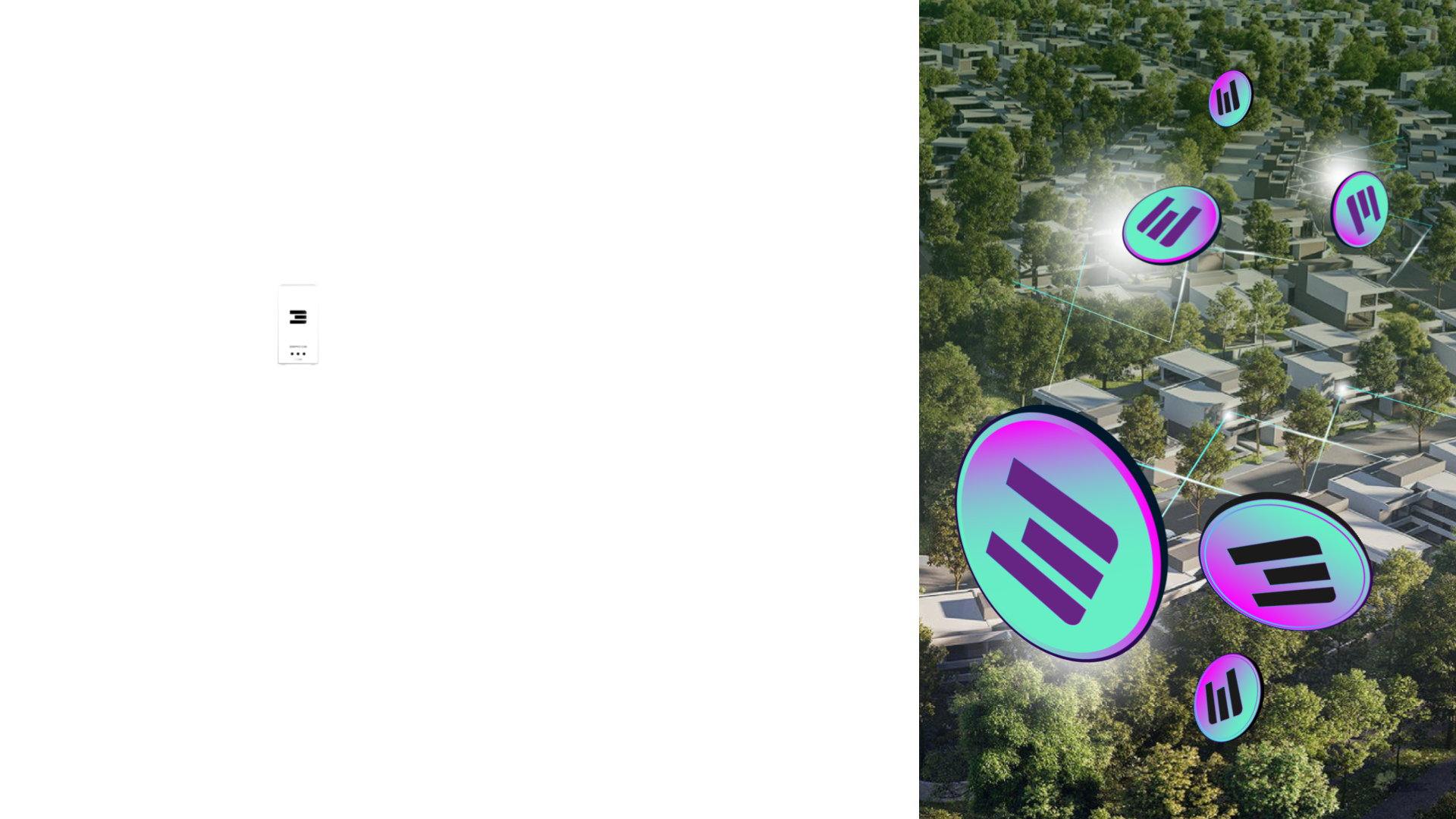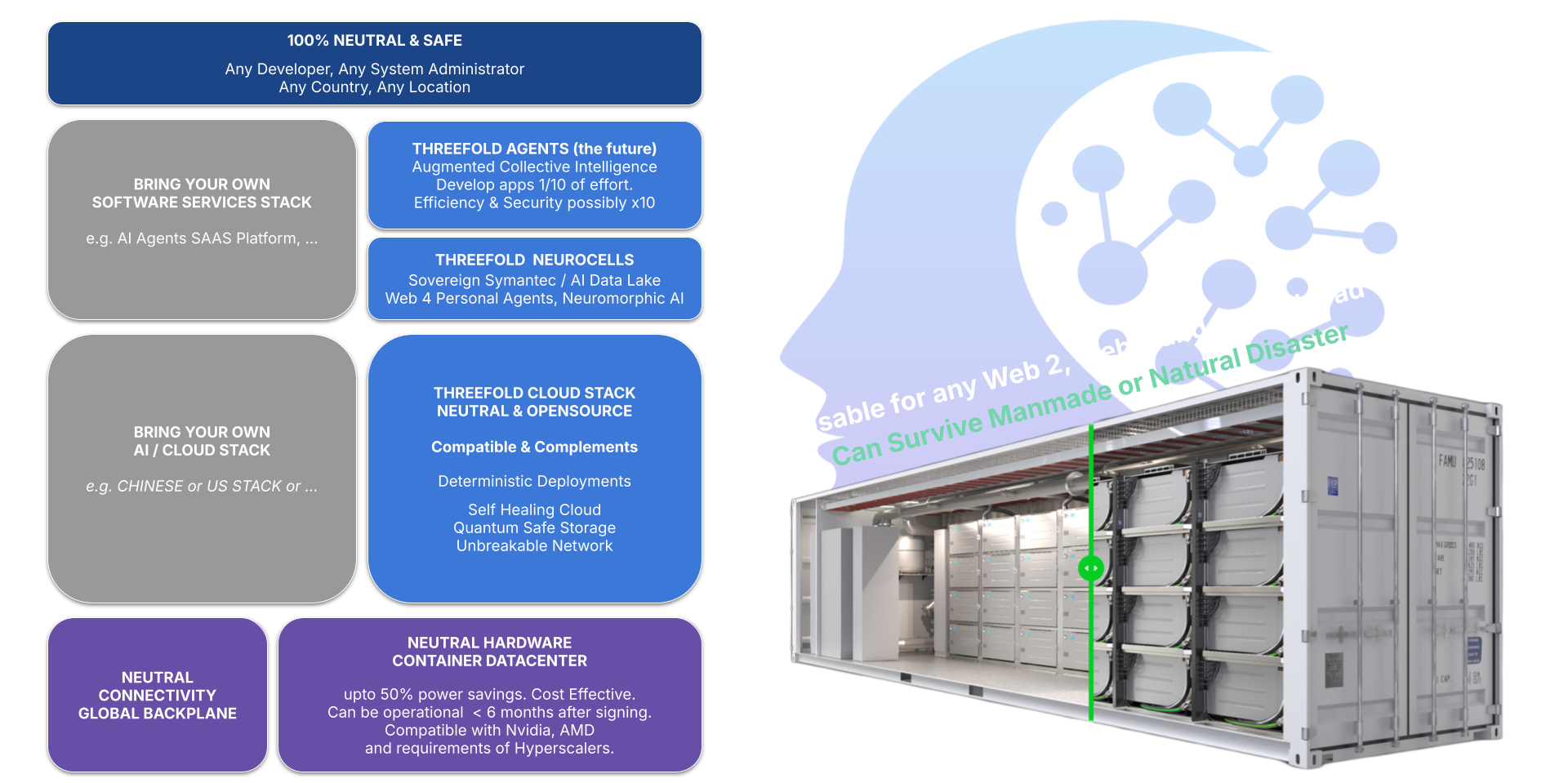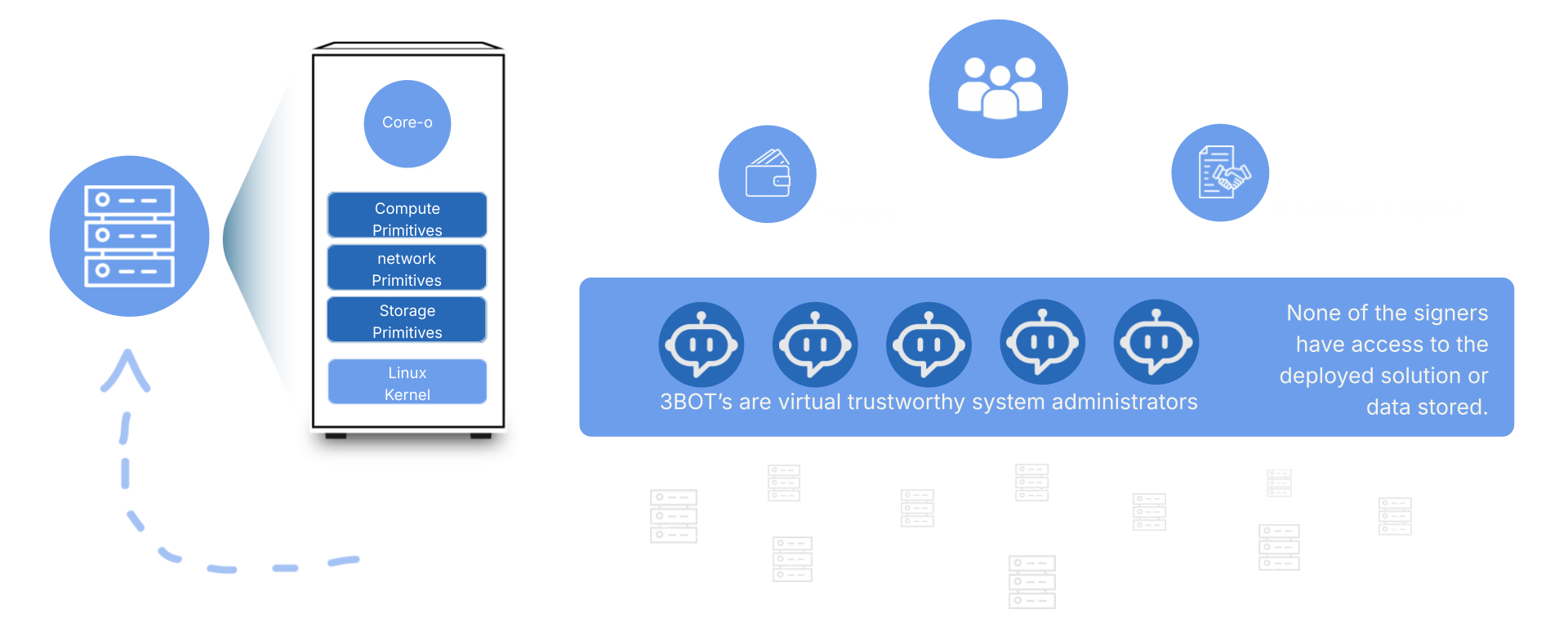16 KiB
Introduction: Turning Real Estate into Digital Infrastructure
Today's real estate developments are no longer just about physical living spaces, they can also be digital infrastructure. By integrating compact AI & cloud nodes into residential or mixed-use properties, developers can transform homes into revenue-generating, low-latency cloud assets.
These Cloud Nodes produce valuable AI, storage, compute, and network capacity. Just like solar panels produce electricity, these nodes produce digital capacity, the fastest-growing utility in the world.
This decentralized model offers a powerful alternative to energy-hungry centralized data centers. Installed locally in each building or neighborhood, the infrastructure is more sustainable, more secure, and offers direct benefits to both homeowners and developers.
This positions your development at the forefront of a new, high-yield property class: digitally empowered real estate.
The Concept
Augmenting Real Estate with Cloud Intelligence
Today's real estate is evolving beyond walls and rooftops, into a platform for digital services. By embedding Cloud Nodes into residential and mixed-use buildings, property becomes more than just space, it becomes infrastructure.
Each Cloud Node is a self-contained unit of compute, storage, and networking, transforming any home or building into a contributor to the decentralized internet. These nodes produce what we now recognize as the world’s most valuable digital commodity: computing power.
As Sam Altman and others have highlighted, compute is rapidly becoming the new currency, the core resource enabling AI, automation, and intelligent applications. Instead of being centralized in hyperscaler facilities, this value can now live locally, within communities.
From Energy to Intelligence: A Clear Analogy
Just as the energy industry shifted from centralized nuclear plants to decentralized solar panels, the internet infrastructure is undergoing a similar transformation, from centralized data centers to community-hosted AI & cloud grids.
The logic is simple:
- Solar panels generate electricity that households can consume or sell.
- Cloud Nodes generate digital capacity, compue, storage, and AI power that can also be consumed or monetized.
The Real Estate Opportunity
For developers, this means:
- Higher property value with minimal additional CAPEX
- New recurring digital revenue streams alongside traditional rent
- Greater appeal to buyers and tenants looking for future-ready infrastructure
For communities, it means:
- Local ownership of digital infrastructure
- Resilience in the face of internet outages, power disruptions, or geopolitical instability
- Participation in the future of AI, without dependency on far-away cloud providers
This is how real estate becomes a digital public utility, and how neighborhoods can form the foundation of a sovereign, sustainable internet, one that’s owned by the people, powered by local nodes, and optimized for the future.
This model creates a local, self-sustaining economy, with an integrated token (optionally visible to the end user) which is a new kind of digital unit that represents usable AI and internet power. These can be earned, traded, or used to operate next-gen services like personal AI agents, secure storage, and digital identity, all hosted within your own building or neighborhood.
Why Residents Benefit from a Local AI & Cloud Infrastructure
Living in a digitally empowered neighborhood means more than just faster Wi-Fi, it's a shift in how you connect, learn, work, and earn. With cloud and AI nodes embedded directly into your building, your digital life becomes faster, safer, and more private. You no longer rely on distant tech giants to store your files, run your apps, or process your data. Instead, everything you need is right there, inside your community, owned and operated locally. This setup gives you access to powerful tools normally reserved for large companies: private AI assistants, high-speed storage, secure communications, and collaborative apps, all free to use and free from advertising or surveillance.
What’s more, your home now contributes to a global digital grid. As the cloud nodes generate compute power for the network, you receive rewards in return. It’s like owning a solar panel, but instead of producing electricity, your space helps power the future of the internet, and you get paid for it. And because it’s local, it’s also more resilient. If the global internet goes down or a major cloud service has issues, your local network keeps running, ensuring that your digital life continues without interruption.
Proposal
Decentralized Datacenter with AI & Cloud - Deployment Plan
We propose a staged investment strategy to deploy decentralized AI & cloud datacenters. The structure minimizes risk while enabling scalable rollout and early returns.
Unit Timeline – Standard Rollout
Day 0 – Closing
- SPV activated and capital-ready
- Legal structure in place (shareholder & investment agreements)
- Core team operational
- 60% of offtakers committed (covers interest & OPEX of Unit 1)
- Rollout plan finalized and purchase agreements prepared
Day 1
- 20% of capital deployed for hardware pre-purchase
- Site surveys initiated
- Team mobilized
Day 20–60
- 60% of capital deployed
- Hardware installation across sites
- Network & power prep completed
- Connectivity testing
Day 60–90
- Remaining 20% for testing and go-live
- Acceptance testing
- System operational
- Marketing & offtaker expansion for Unit 2
Month 6
- Yield generation: +-1% of principal/month = 12% per year
Month 24
- 12% per year interest + value increase
- Recurring revenue of project +6m per year
- Means value of project is 3-5x the recurring revenue, means 18 to 30m EUR
Month 36
- 12% per year interest + value increase
- Recurring revenue of project +10m per year
- Means value of project is 3-5x the recurring revenue, means 30 to 50m EUR
Month 48
- …
Financials
Unit 1 – €10M
- Rollout of up to 2,000 nodes
- Monthly repayment starts Month 7: €100K/month (1% of €10M)
- Unit 2 triggered upon 50% capacity utilization \
Unit 2 – €10M–€50M
- Size defined based on Unit 1 offtake speed & confirmed new offtakers
Exit & Security
- Clear repayment model starting within 6 months
- Asset-backed: physical infrastructure & contracts
- Optional equity upside through SPV or holding-level convertible
Appendix A: Market Analysis – Why the World Needs Decentralized AI Cloud Infrastructure
Global Market Shifts: Infrastructure at a Crossroads
The rapid adoption of AI, cloud computing, and edge technologies is driving unprecedented demand for compute infrastructure. However, the traditional centralized data center model is failing to keep up, with significant implications for cost, security, latency, and energy use.
- AI data center market projected at $157B by 2034 with 27% CAGR
- 85% of enterprise AI workloads will be inference-based by 2026
- Cloud spending forecasted at $723.4B by 2025, up from $271.5B
- Edge computing growing at 24% CAGR, requiring urban presence
There is a growing infrastructure gap,demand is outpacing supply,and centralized models are too slow, expensive, and energy-hungry to respond.
The Real Estate Opportunity: Add Digital Yield
Real estate is currently experiencing a major correction, especially in high-income regions like Germany. This opens a strategic window to repurpose underutilized or distressed assets into digital infrastructure.
German Real Estate Snapshot:
- 33% price decline since 2022
- €228B in distressed loans needing refinancing by 2027
- Over 20,000 bankruptcies among developers
- 8%+ office vacancy rates and falling yields
Decentralized AI Infrastructure: More Efficient, More Resilient
A distributed cloud network embedded into neighborhoods offers major advantages:
| Feature | Centralized Data Center | Local Cloud Node Infrastructure |
| Latency | Depending location | For certain regions much better e.g. emerging countries |
| Energy Usage | Hard to organize and can be High | For certain workloads e.g. future AI Agents can be up to 10x less |
| Sovereignty & Privacy | Controlled by few centralized parties | 100% local ownership |
| Infrastructure Resilience | Vulnerable to single failures | Distributed and fault-tolerant |
In addition, local infrastructure enables:
- Smart home & telework optimization
- Education & content delivery locally
- Edge AI processing for real-time systems
- AI agents for autonomous property management \
Financial Innovation Meets Physical Infrastructure
By tokenizing real estate and compute capacity, a new class of asset is created:
- €5.3T Islamic finance market now accessible via Shariah-compliant digital infrastructure projects
- Tokenization enables fractional ownership and 24/7 global access
- IRRs of 15–28% with diversified digital revenue (AI, storage, ESG, colocation) \
Example IRR (100m² unit):
- Traditional: ~8–12%
- AI/Cloud Enabled: ~TBD%
Why Now?
- The race for AI and compute is geopolitical,local sovereignty matters.
- Cities are full of underutilized buildings,infrastructure hides in plain sight.
- Energy-efficient, community-owned alternatives are needed for climate, economy, and trust. \
By turning buildings into cloud infrastructure, we turn static capital into active digital value,creating the physical backbone of a decentralized digital world.
Appendix B: Product Description
In a world where demand for AI, cloud computing, and digital services is exploding, traditional data centers,Tier 3 and Tier 4,are falling short. They are costly, centralized, and fragile, often requiring massive real estate, specialized IT staff, and foreign-owned infrastructure. Worse, they remain vulnerable to outages, cyberattacks, and geopolitical risks.
ThreeFold introduces a radically more resilient, efficient, and accessible alternative: Tier-S and Tier-H decentralized datacenters.
What Are Tier-S and Tier-H?
- Tier-S Datacenters are high-density, modular data containers capable of handling over a million transactions per second. Designed for industrial-scale applications, each unit is self-contained, secure, and deployable almost anywhere. They can serve over 100,000 people’s digital needs while being compatible with sovereign AI agents and hyperscale workloads. Built to survive both cyberattacks and natural disasters.
- Tier-H Datacenters take decentralization further by distributing nodes directly into homes, offices, and communities. These nodes offer full compute, storage, and network capabilities,perfect for hosting Kubernetes clusters, AI inference workloads, Web2/Web3 applications, and sovereign AI agents. They're fast, self-healing, energy-efficient, and give users complete control over their digital life.
Why It Matters
Traditional Tier-3 datacenters require experts, expensive real estate, and complex supply chains. By contrast, ThreeFold’s Tier-S and Tier-H systems are:
- Pre-installed and self-managing: no technical team needed to run
- Resilient by design: can withstand outages, cable cuts, and cyber events
- Hyper-efficient: up to 10x less energy use for some workloads
- Fully private and sovereign: users own and control the entire stack
- Globally deployable: from large-scale enterprise use to personal infrastructure \
Who It’s For
ThreeFold’s decentralized datacenter technology is ideal for:
- Governments seeking sovereign cloud capacity
- Telecoms and edge providers building local compute grids
- Developers and startups needing reliable cloud without hyperscaler lock-in
- AI and Web3 companies deploying inference engines, storage layers, or full applications
- Communities and individuals who want a plug-and-play cloud that works like electricity
Tier-S = Compatible Full Stack - hardware & Software
This solution represents a new class of digital backbone: a modular, sovereign-ready data center that can run any Web2, Web3, or AI workload, securely, efficiently, and independently from centralized providers.
At the heart of the solution is a containerized data center, a fully equipped and portable unit that delivers high-performance compute, storage, and networking capacity. Designed for rapid deployment, it can be operational in less than six months. It’s compatible with industry-standard hardware like Nvidia and AMD and built to withstand both manmade and natural disruptions.
Running inside is the ThreeFold Cloud Stack, a neutral and open-source operating layer. It offers:
- Self-healing capabilities that autonomously recover from failures
- Quantum-safe storage to protect sensitive data
- An unbreakable mesh network that resists censorship and outage
- And deterministic deployment, ensuring everything runs exactly as intended
This stack is not exclusive, it can also complement or coexist with other cloud platforms. Whether you're running Chinese, US, or custom-built AI and cloud software, the infrastructure remains open and interoperable. Enterprises and nations can bring their own stack while benefiting from the safety and resilience of ThreeFold’s core.
Beyond the core system, powerful optional modules can be layered on:
- ThreeFold Neurocells, which offer a sovereign AI data lake and support for neuromorphic and agent-based AI
- ThreeFold Agents, enabling radically faster and more secure development of AI applications
Combined with a neutral connectivity backbone and global operability, this system empowers any developer, anywhere in the world, to build and deploy modern workloads without relying on foreign-controlled infrastructure.
Cloud Stack
This architecture represents a new kind of cloud infrastructure. one that is decentralized, self-managed, and inherently secure.
At the core is a lightweight, modular software stack running on individual servers. This stack includes the Linux kernel, along with compute, network, and storage primitives, all orchestrated by a minimal control layer called Core-0. Together, these components turn any server into a fully functional and secure cloud node.
Instead of relying on traditional system administrators, this network is managed by 3BOTs, virtual, autonomous agents designed to securely deploy and manage services. These 3BOTs act as trustworthy digital administrators, ensuring operations run smoothly without any human intervention. Importantly, none of the people involved in signing contracts or funding deployments have access to user data or deployed applications.
When an IT contract is signed and funding is allocated through a digital Treasury, the 3BOTs automatically activate the services across the network. The infrastructure is self-healing and distributed, made up of many independent nodes providing compute, storage, and networking capacity,all interconnected without central control.
This approach enables a sovereign, privacy-first cloud: one that is energy-efficient, tamper-resistant, and resilient even under extreme conditions. It’s ideal for running modern workloads such as AI agents, Kubernetes clusters, web applications, or decentralized storage, and it works seamlessly for both Web2 and Web3 ecosystems.
In short, it’s a cloud that runs itself and belongs to everyone.
This decentralized infrastructure provides a universal base layer of compute, storage, and network that is natively compatible with AI, Web2/Web3 apps, blockchains, digital twins, and IoT, enabling secure, scalable, and efficient
